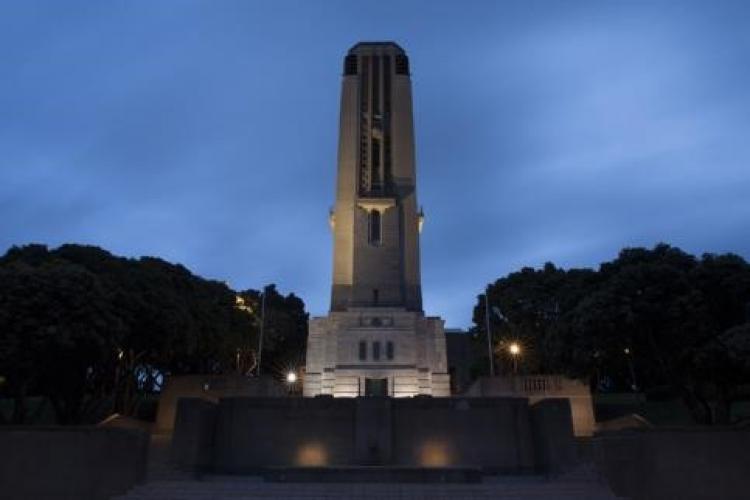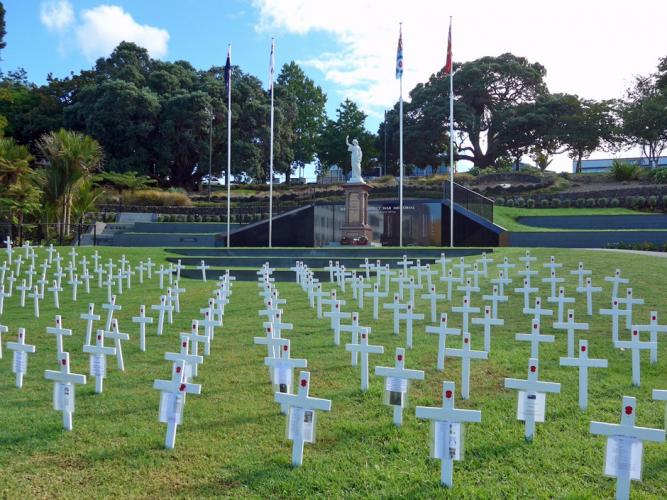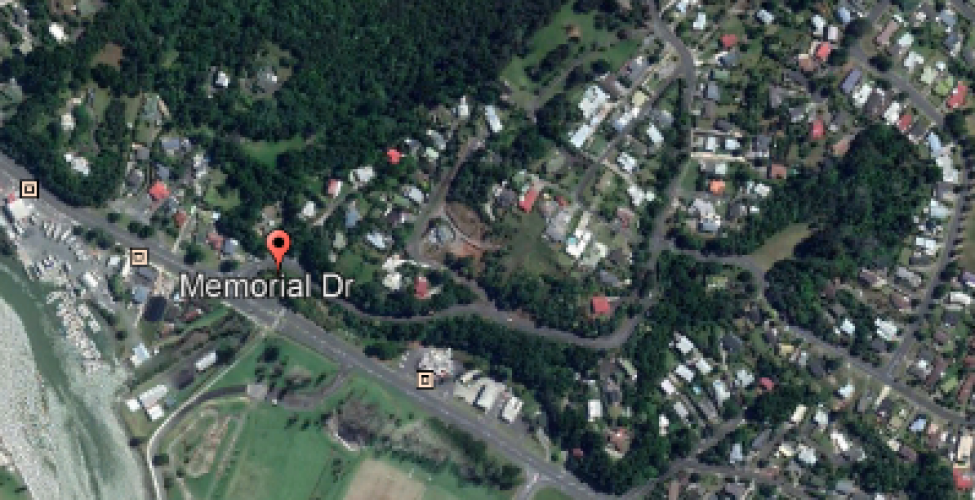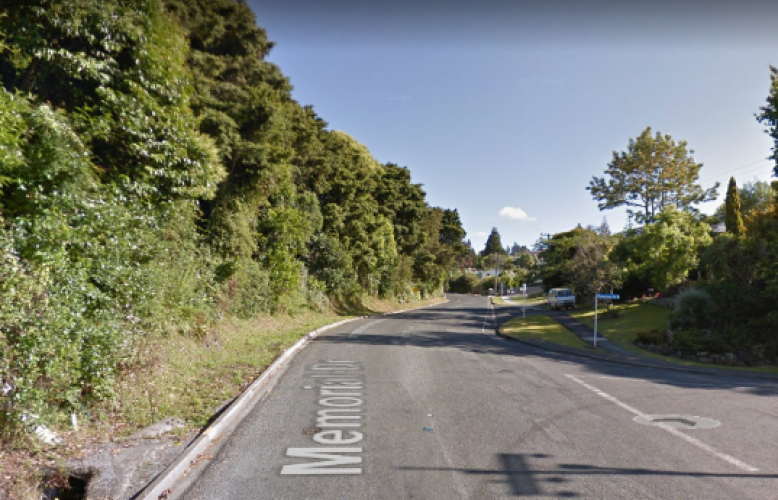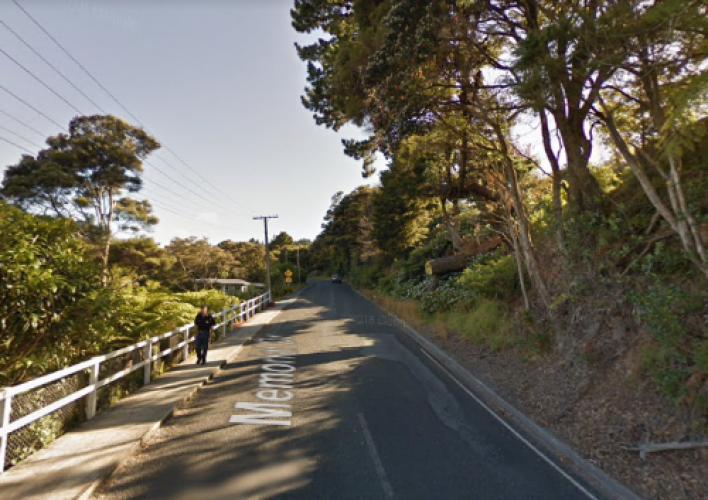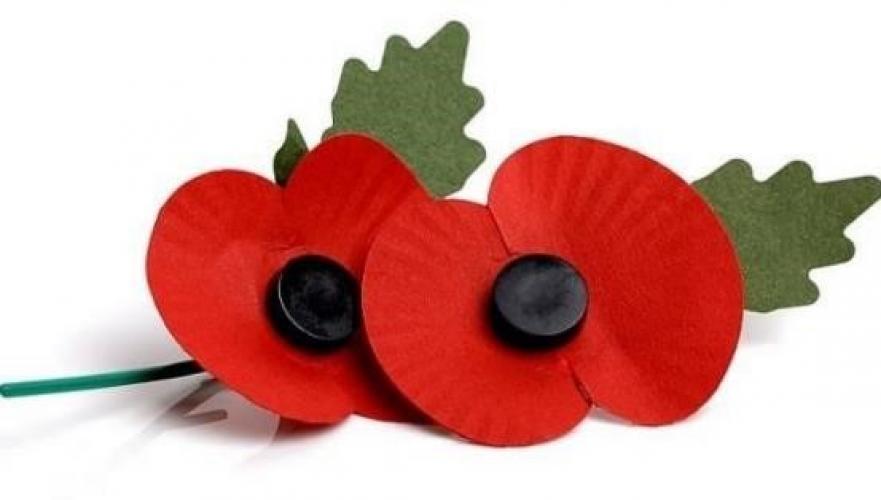301 Memorial Dr Riverside Whangarei, street scene 2.2018
Reason for the name
This street in Whangarei was named as part of the city’s war memorial plan. More than 18,000 New Zealand soldiers died in the First World War, and most were buried in foreign lands. This was a huge number of losses for a small country, and the families and friends of those who died had no graves at which to grieve. New Zealanders’ desire to remember their dead in their own communities led to more than 500 local war memorials being erected around the country and many of our streets were named in honour of overseas service. These memorials allowed grieving parents, lovers, siblings and friends to contemplate their loss, and returned soldiers to honour their mates.
Council Minutes indicate that a point from the Old Parua Road to the summit of Parahaki Road was to be part of the Whangarei War Memorial Plan. Council Minutes dated 30/11/1965 states that a petition was received from residents wishing to have the total length of the road from Riverside Drive to the summit to be called Parahaki Memorial Drive or Parahaki Drive. It was agreed by Council that the total length of the road was to be named Parahaki Memorial Drive. On 17/6/1970 due to confusion with Parahaki Street the name Parahaki was dropped from the official name and the road became Memorial Drive.
The NZ Poppy Places Project is about ensuring we never forget. It is about a place where our heroes’ contributions and their stories are linked to the physical via the simple placement of a poppy on a memorial. Many of our street names and places are directly related to people and events from overseas military history. They are memorials and they are often known to only a small and shrinking number of citizens. These street names and other places such as bridges, parks, buildings, trees, walk-ways and cycle-ways are memorials which have a link to our military involvement in a conflict or operational service overseas.
Author: The Poppy Places Trust
War memorials can be any tangible object which has been erected or dedicated to commemorate war, conflict, victory or peace; or casualties who served in, were affected by or killed as a result of war, conflict or peacekeeping; or those who died as a result of accident or disease whilst engaged in military service.
War memorials commemorate the events and the casualties of War. These war memorials include civic memorials, larger national monuments, war cemeteries, private memorials and a range of utilitarian designs such as halls, parks, bridges, trees, streets and pools dedicated to remembering those involved in the conflict. Huge numbers of memorials were built in the 1920s and 1930s, with around 176,000 erected in France alone. This was a new social phenomenon and marked a major cultural shift in how nations commemorated conflicts. Interest in World War I and its memorials faded after World War II, and did not increase again until the 1980s and 1990s, which saw the renovation of many existing memorials and the opening of new sites. Visitor numbers at many memorials increased significantly, while major national and civic memorials continue to be used for annual ceremonies remembering the war.
The Commonwealth War Graves Commission (CWGC) memorials exist in order to officially record servicemen and women who died during the designated war years in service, or of causes attributable to service, and have no known grave or were buried or lost at sea. The British Imperial War Museum’s (IWM) War Memorials Register (WMR) uses this definition to help the public and organisations identify a shared understanding of what is meant by a war memorial.
The Poppy is the most powerful and easily recognised symbol of both courage and sacrifice that we have as New Zealanders. By using the Poppy (an internationally known symbol) to mark these places, those that pass by will see the Poppy and be reminded every time of ANZAC.
There are many places in New Zealand that use the term Memorial and if that memorial is adorned with a poppy in the future then it commemorates and recognises as part of the heritage of New Zealanders, the participation of New Zealand in military conflicts and military operational services overseas.
To be considered a memorial the object must have a clearly defined and stated commemorative purpose. This purpose can be expressed in the wording on the memorial itself or in a printed document, or it might be a newspaper announcement. Street names have a clearly defined commemorative purpose and the reason for naming is usually recorded by the local Councils. The placement of the Poppy identifies and confirms the name as a war memorial.
Conflict/war includes formally declared states of war, armed conflict, civil war, rebellion and acts of terrorism. The Poppy Places Trust neither makes any judgment on conflicts nor promotes any political or other viewpoint associated with either specific conflicts or the general principle of conflict.
Military service refers to service in any of the armed forces during war, conflict or peacetime and the subsequent return home as well as deaths after the end of the conflict as a result of wounds or the effects of war.
Civilian service refers to those who served in wartime non-combatant services including, but not exclusive to Merchant Marine Service, Red Cross, Home Guard, Air Raid Wardens, Fire Watchers and similar groups involved with a war effort.

